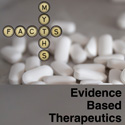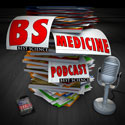In episode 68, we get to the “heart of the matter” of stroke prevention for atrial fibrillation. We find out from Peter Loewen, that it is all a numbers game, and he gives us the tools to deal with this issue. We talk about warfarin and ASA and clopidogrel with respect to their benefits and harms. At the end of the podcast Peter tells us about dabigatran, which obviates all the messages we provide in this podcast. Mike develops an intracranial bleed during the podcast, Peter and James act concerned but continue on because that is what Mike would have wanted.
Show Notes
1) Estimating the risk of strokes in a patient with atrial fibrillation
CHADS2 score
JAMA 2001;285:2864-70
A useful electronic resource from peterloewen.com
Web-based calculator
2) Warfarin versus ASA in atrial fibrillation patients > 75 yrs old
Lancet 2007;370:493–503
3) Clopidogrel and atrial fibrillation
ACTIVE W
Clopidogrel plus ASA versus warfarin (in patients suitable for warfarin)
Lancet 2006;367:1903-12
ACTIVE A
ASA plus clopidogrel vs ASA (in patients not suitable for warfarin)
NEJM 2009;360:2066-78
4) Vitamin K supplementation for labile INRs
Blood 2007;109:2419-23
5) Brief stops in warfarin – what do you do?
Cohort studies (no RCT yet, will get when BRIDGE finished)
Arch Intern Med 2008;168:63-9
Mayo Clin Proc 2008;83:639-45
6) Dabigatran versus warfarin for stroke prevention in atrial fibrillation
RE-LY
N Engl J Med 2009;361:1139-51


